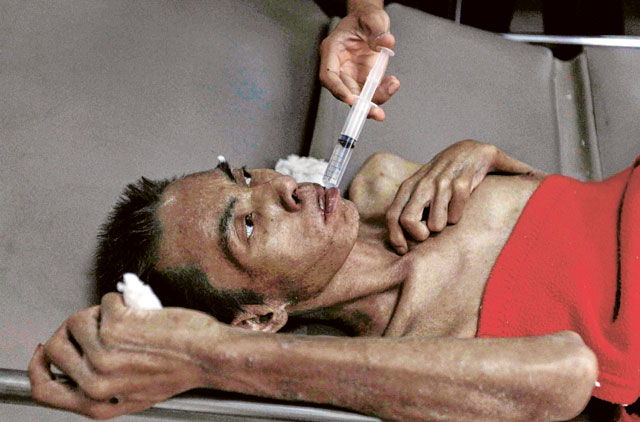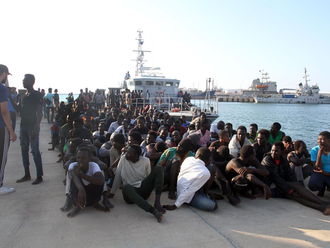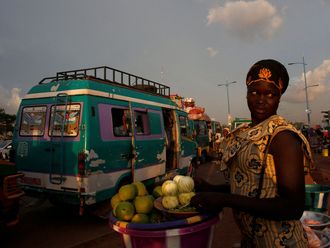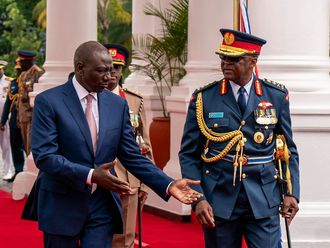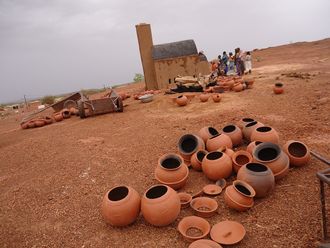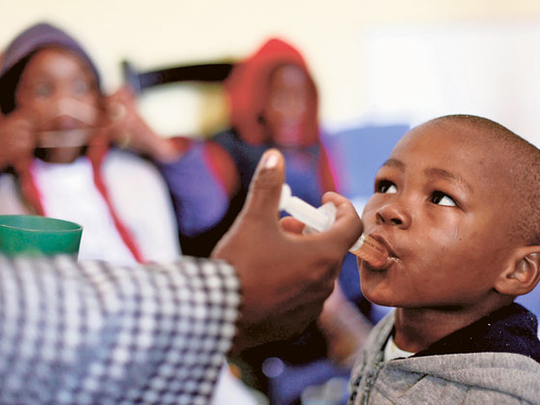
Johannesburg: A film opening on World Aids Day yesterday that mixes live action and animation is taking viewers inside a football player's body, showing how he becomes infected with HIV and spreads the virus.
The cast and characters are Kenyan, Nigerian and South African — which producers hope will help the movie travel across the continent hardest hit by the disease. The pull of football, which has a unique power to unite Africans, also should help.
Harriet Gavshon, a producer who worked on Inside Story: The Science of HIV/Aids, said the ‘toxic combination' of death and sex still makes it difficult for people to discuss Aids.
"You have to constantly find new ways of trying to talk about it," she said.
The 90-minute film, aimed at viewers from their mid-teens and up, is a co-production of Johannesburg's Curious Pictures and an international development programme sponsored by the US reality and educational TV company Discovery.
Yesterday's premiere in Johannesburg will be followed by a US debut in January in Washington and one in Nigeria later next year.
Aric Noboa, president of Discovery Channel Global Education Partnership, said they hope to broadcast the film and distribute DVDS, and booklets to help guide community leaders in post-film discussions.
Films, TV and radio shows, newspaper ads and billboards can get conversations started. But experts at loveLife, a group that has pioneered a range of programmes to teach young South Africans about Aids, say changing behaviour requires keeping the dialogue going long enough for lifesaving messages to sink in.
It appears, though, that messages are getting across in South Africa, at least to young people targeted by projects such as Inside Story. Results released this week from a South African health ministry survey found that infections among 15 to 24-year-olds had dropped from 23.1 per cent in 2001 to 21.8 per cent in 2010.
But across all age groups, infections are creeping up, and this country of 50 million that has more people — at least 5.5 million — living with HIV than in any other country. The focus on prevention is becoming even more important. The cost of treatment is increasing as more people test and go on drugs, and efforts to find a cure or vaccine are advancing slowly and fitfully.
According to a UN report released on the eve of World Aids Day, funding for HIV programmes dropped from $15.9 billion (Dh58.9 billion) in 2009 to $15 billion in 2010, well below the estimated $22 billion to $24 billion the UN says is needed in 2015 for a comprehensive global response. The report cited the global economic crisis and concerns about the sustainability of the Aids response, given the increasing costs of treatment and prevention.
Problem confounded
Last week, the Global Fund to Fight Aids, Tuberculosis and Malaria declared it had run out of money to pay for new health programmes in the next two years. The fund currently pays for Aids drugs for about half of the world's HIV patients in developing countries.
It took five years and $2 million, raised from the US and South African governments, the UN Aids agency and other donors, to put together Inside Story.
Noboa said Inside Story grew out of requests from teachers in Africa and elsewhere for more information about Aids.
The problem is confounded in South Africa by years of misinformation from a president, Thabo Mbeki, who questioned the link between HIV and Aids, and a health minister, Manto Tshabalala-Msimang, who promoted a ‘treatment' of beets and garlic.
"I think the issues that were part and parcel of the Mbeki era are still there, they still linger on," said Dr Dave Spencer, a programme director at Right to Care, which provides treatment for thousands of HIV-positive South Africans.
"It's so hard to know where exactly we are in the fight," said the director of Inside Story, Rolie Nikiwe. "It's a frustrating fight, but it's one that needs to be fought."


